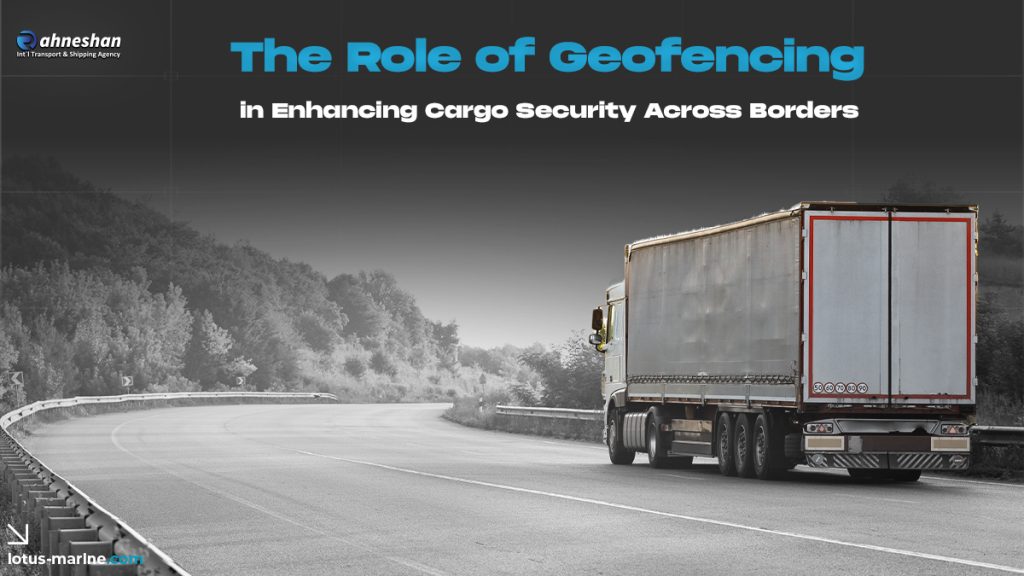Introduction
In today’s interconnected world, cross-border trade is expanding at an unprecedented pace. With this growth comes heightened risks: cargo theft, smuggling, tampering, and compliance violations. For global freight operators, maintaining cargo security across borders is more critical than ever. One of the most promising technologies reshaping this field is geofencing—a digital tool that creates virtual perimeters around geographic areas to monitor and control cargo movement. By combining GPS, RFID, and IoT data, geofencing enables real-time monitoring, proactive alerts, and automated security protocols. This article provides a detailed analysis of how geofencing is transforming global supply chains in 2025.
What Is Geofencing in Cargo Logistics?
Geofencing uses digital mapping technologies to set up virtual boundaries around specific areas such as ports, warehouses, customs zones, and even highways. When a cargo shipment enters or exits the defined zone, the system triggers pre-programmed alerts or actions.
Examples of Geofencing Applications:
- Monitoring trucks to ensure they remain on designated routes during international deliveries.
- Ensuring containers stay within authorized customs clearance areas until properly processed.
- Alerting security teams if shipments enter restricted or high-risk zones.
- Automating lock systems on smart containers when tampering is detected outside authorized zones.
Why Geofencing Matters for Cargo Security
1. Theft and Hijacking Prevention
Cargo theft costs billions annually. With geofencing, logistics managers receive immediate alerts when a truck deviates from its approved route, enabling rapid response before losses escalate.
2. Enhanced Regulatory Compliance
Geofencing helps companies comply with customs and cross-border requirements by ensuring goods remain within approved areas until clearance is granted. This reduces penalties, delays, and compliance disputes.
3. Real-Time Supply Chain Visibility
Instead of relying on periodic updates, geofencing provides continuous monitoring. Managers can see exactly where shipments are, how they are moving, and whether they remain secure.
4. Automated Incident Response
When cargo moves unexpectedly, automated protocols can lock the container, notify authorities, and trigger backup routing—all without human intervention.
5. Cost and Risk Reduction
By minimizing theft, compliance issues, and delays, geofencing reduces both financial risk and insurance costs.
Geofencing in Cross-Border Operations
Cross-border logistics introduces unique complexities: multiple customs authorities, varying regulatory frameworks, and increased exposure to risk during long journeys. Geofencing addresses these challenges by:
- Setting multi-layered boundaries at borders, ports, and inland checkpoints.
- Coordinating with customs authorities to confirm cargo status in real time.
- Reducing manual checks by integrating with digital customs platforms.
Challenges in Geofencing Adoption
- Infrastructure Limitations: Weak GPS or IoT coverage in remote areas can reduce accuracy.
- Integration Complexity: Geofencing must be integrated with transport management systems (TMS), warehouse management systems (WMS), and customs platforms.
- Data Privacy and Security: Handling large volumes of location and cargo data raises compliance issues under regulations such as GDPR.
- False Alarms: Poor calibration may trigger unnecessary alerts, disrupting operations.
Future of Geofencing in Cargo Security
By 2030, geofencing is expected to be a standard security measure for high-value or high-risk cargo. Key advancements include:
- AI-Powered Risk Prediction: Systems that anticipate route risks and adjust geofences dynamically.
- Blockchain Integration: Immutable tracking records that enhance trust and reduce fraud.
- Autonomous Transport Integration: Smart geofenced corridors for self-driving trucks and drones.
- Global Customs Collaboration: Seamless integration with customs platforms for near-instant clearances.
Conclusion
Geofencing is no longer a theoretical tool—it is becoming a frontline defense in global cargo security. By creating real-time, automated, and adaptive monitoring systems, it reduces theft, ensures compliance, and enhances transparency across borders. For carriers, freight forwarders, and shippers, adopting geofencing is not just a technological upgrade—it’s a strategic necessity for the future of secure, resilient logistics.
Frequently Asked Questions
1. How does geofencing improve cargo security?
It creates virtual perimeters that trigger alerts if cargo moves outside authorized zones, enabling faster response to threats.
2. Is geofencing applicable only to trucks?
No. It can be used for ships, airplanes, rail, and even individual containers.
3. Can geofencing support customs compliance?
Yes. It ensures cargo remains within authorized customs zones until cleared, reducing delays and penalties.
4. What technologies support geofencing?
GPS, RFID, IoT sensors, and integrated logistics management systems.
5. Will geofencing become mandatory for global freight?
While not yet mandatory, many insurers, regulators, and major logistics players encourage its adoption for high-value shipments.







